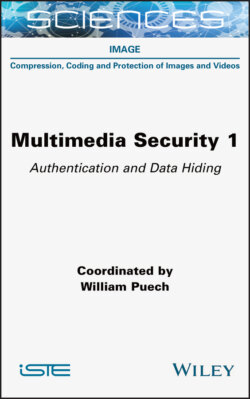Читать книгу Multimedia Security, Volume 1 - William Puech - Страница 46
1.5.4. Beyond indicators, making decisions with a statistical model
ОглавлениеBlock artifacts, the number of zeros and the frequency interval of the histograms can be seen as compression detectors. However, a statistical validation is needed to determine whether the observations are indeed caused by compression or they are simply due to chance. This validation can be carried out by the a contrario approach (Desolneux et al. 2008).
Applied to the whole image, these methods make it possible to know if an image has undergone JPEG compression, and if necessary, to know the position of the grid. The position of the grid origin indicates if the image has undergone a cropping after compression, as long as this cropping is not aligned with the initial grid, which can happen by chance in one out of 64 cases.
To verify an image, it is important to make the previous analysis methods local by checking the consistency of each part of the image with the global model. Several methods detect forgeries in areas having a different JPEG history than the rest of the image (Iakovidou et al. 2018; Nikoukhah et al. 2019).
Figure 1.12 illustrates a method that highlights an area where the JPEG grid origin is different from the rest of the image. In fact, the vote map in Figure 1.12(c) shows that it is already possible to visually distinguish the objects of the image having voted for a different grid than the rest of the image. A statistical validation automates the decision by giving a binary mask of the detection, as illustrated in Figures 1.12(e) and 1.12(f).
Figure 1.11. Histogram of a DCT coefficient for an image before and after compression. There is a clear structure after quantization of the coefficients. The value of quantization is q = 6
Figure 1.12. In a), an area has been copied four times. The original image is shown in b)
COMMENT ON FIGURE 1.12.– In (c) and (d), the color indicates the origin of the grid of the JPEG blocks detected locally for the falsified and original images, respectively. The navy blue color corresponds to the detected main grid of origin (0, 0). In (c), the areas whose block origin does not match the rest of the image are clearly visible. This detection is made automatic by the a contrario method, whose result can be seen in (e) and (f), where no anomaly is detected in the original image (f), while the falsified image (e) finds the four areas detected as being altered. The original and falsified images come from the database (Christlein et al. 2012).
Likewise, the quantization matrix can be estimated in order to know if it is consistent in each block of the image, and with the global quantization matrix which can be found in the associated header file, which allows the decompression of the image (Thai et al. 2017).
